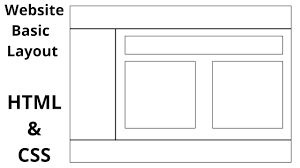
Webpage layout is an important part of website design. It is the arrangement of elements on a webpage that allows visitors to quickly and easily find the information they are looking for. A well-designed webpage layout can make a website more user-friendly, improve the user experience, and ultimately increase the chances of a successful conversion.
When designing a webpage layout, it is important to consider the overall look and feel of the page as well as how easy it is to navigate. The most successful layouts have a clear visual hierarchy that guides users through the page. This includes using headings, subheadings, and other visual cues to direct users’ attention. Additionally, it is important to use whitespace effectively in order to create visual balance and focus on key elements.
In order to create an effective webpage layout, it is important to consider how users will interact with the page. This includes considering user flow and how visitors will move through the page in order to find what they are looking for. It is also important to think about how content should be organized in order to make it easier for users to find what they need quickly and easily. Additionally, it is important to consider device compatibility when designing a webpage layout so that it looks good on all devices including desktop computers, tablets, and smartphones.
Finally, when designing a webpage layout it is essential to keep usability in mind at all times. This includes making sure that buttons are clearly labeled and links are easy to click on as well as ensuring that navigation menus are simple and intuitive so that visitors can easily find their way around the website. By keeping usability top of mind during design, you can ensure that your website provides an enjoyable experience for visitors which will ultimately lead them towards conversion goals such as signing up for an account or making a purchase.
What are the 4 most frequently asked questions about webpage layout?
- What are examples of page layout?
- What makes a good webpage layout?
- What is the layout of a web page?
- What are the 4 main parts of any website layout?
What are examples of page layout?
- Single-column layout: A single-column layout is the simplest form of page layout. It only uses one column of content and has no sidebars or other elements.
- Multi-column layout: A multi-column layout uses more than one column to arrange content on a page. This type of layout usually includes sidebars, menus, and other elements to create a more organized design.
- Grid layout: A grid layout arranges content into a grid pattern, using rows and columns to organize information in an orderly fashion. This type of page layout is often used for magazine and newspaper websites, as well as for portfolios and image galleries.
- Responsive design: Responsive design adapts the page’s layout to fit different screen sizes and resolutions, allowing the content to be viewed on any device without sacrificing readability or usability.
What makes a good webpage layout?
A good webpage layout should be visually appealing, easy to navigate, and organized. It should also be optimized for different devices and have a clear hierarchy of information. Additionally, it should be responsive to user input and provide clear calls to action. Finally, it should be optimized for search engine visibility and accessibility.
What is the layout of a web page?
The layout of a web page typically consists of a header, navigation menu, body content, and a footer. The header contains the logo and main navigation links. The navigation menu provides links to the different pages on the website. The body content is where the main content of the page is displayed. The footer typically contains copyright information and additional links.
What are the 4 main parts of any website layout?
- Header: This is typically the top portion of the page and usually contains a logo, navigation links, search bar, and other site-wide elements.
- Main Content Area: This is where the main content of the page resides. It can include text, images, videos, or other types of content.
- Sidebar: This is an optional section that usually contains additional information such as related links or ads.
- Footer: This is typically the bottom portion of the page and usually contains copyright information, contact details, and links to privacy policies or terms of use.
